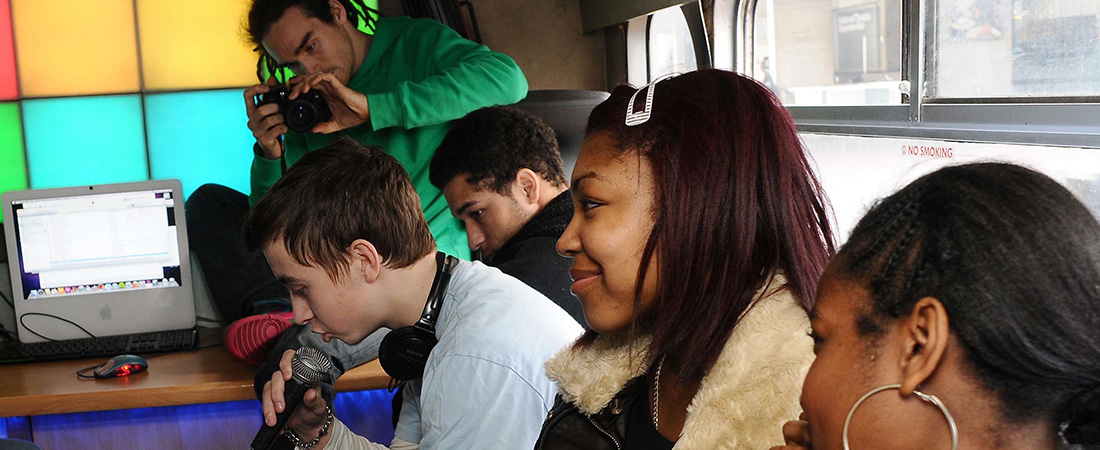International Youth Share Powerful Stories

Innovation knows no age boundaries. At age 15, Louis Braille developed a system for blind readers. A 21 year old created the first television set, and jazz legend Charlie Parker was only 20 when he was first recorded, points out EDC’s Tony Streit. “And he changed the face of music.”
Each day, youth around the world confront and rise above the challenges they face. International Youth Day is held on August 12 to honor young people and those that work with them to create a better future. One program that is doing just that is Adobe Youth Voices (AYV). Since 2006, 153,000 youth have participated in AYV and shared their stories on topics that range from bullying, to violence and loss, to women’s rights, to hope and dreams. Many of these projects are recognized in this year’s Adobe Youth Voices Aspire Awards.
“It’s wonderful to have youth speak for their issues and put it out there,” says Streit, who works with the Adobe Foundation to train educators in the AYV curriculum. AYV has engaged youth in more than 50 countries, providing resources and training to support student media making using video, animation, photography, podcasting, graphic design, poetry, and print.
Q: Why is it important to encourage youth to share their stories?
 Streit: For better or worse, the Internet has made the globe a much smaller place. You’d think that if technology could bring us together, the world would become peaceful. That hasn’t necessarily proven itself to be true yet. There’s still disparity in the world. There’s still war and violence. Young people continue to be marginalized and victimized. The need for them to voice their perspective has never been greater. It’s not just about world politics, but about who they are and what their needs are and their identity.
Streit: For better or worse, the Internet has made the globe a much smaller place. You’d think that if technology could bring us together, the world would become peaceful. That hasn’t necessarily proven itself to be true yet. There’s still disparity in the world. There’s still war and violence. Young people continue to be marginalized and victimized. The need for them to voice their perspective has never been greater. It’s not just about world politics, but about who they are and what their needs are and their identity.
Q: How do educators ensure projects are about the message, not the medium?
Streit: Educators have been helping young people make media in lots of different ways for many years. In helping Adobe envision the program, we looked at that tradition and honored it. So the notion of fostering youth voices didn’t come about because of YouTube and inexpensive portable video equipment, but because of the way educators have engaged and facilitated student media making that’s reflective and personal and contextual. Adobe embraced that through this program and their tagline, “Create with Purpose.” It’s extraordinarily exciting to see that manifest around the world.
Q: What’s the biggest challenge for educators using digital media in the classroom?
Streit: It’s not just learning to use the media-making tools. The biggest challenge for educators is letting go and co-facilitating learning with young people. They need to put a frame around the process and ask the right questions, to steer young people in the right direction. It is easy at first for youth to imitate mainstream media, but what we want to bring out are youths’ unique perspectives. The educator plays a subtle role in helping students add their own experiences to their works. If done right, it inspires youth to think big and try new things.
We’re not just passing out digital cameras to young people, or creating a website for them to do this by themselves. EDC has a motto, “Education is a liberating force.” This work is the embodiment of that. It’s happening in schools and community centers around the world, because educators really want to transform the learning experience for young people. So much innovation can be done by young people. Just because you’re young doesn’t mean you don’t have something important to say or that you can’t influence the world.